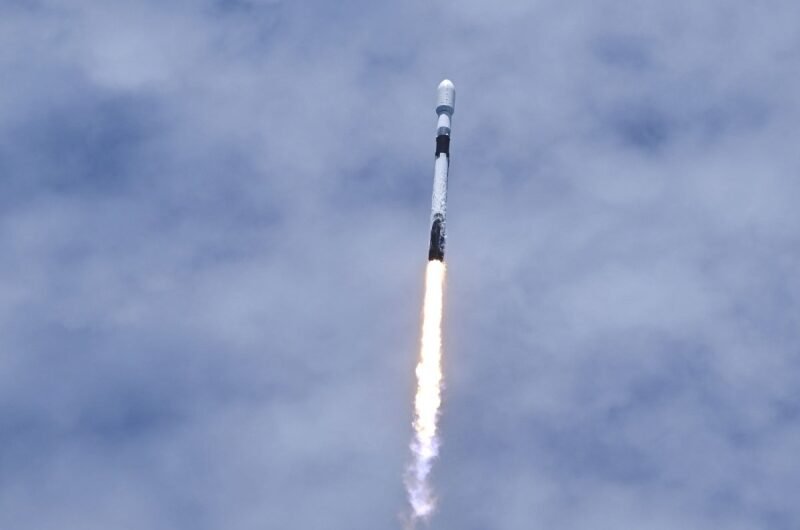Although the Smithsonian would have like to showcase the first motorized vehicle to fly on another planet, the Washington, D.C.-based organization has settled for the next best thing since NASA’s Ingenuity helicopter is currently breaking records on Mars.
On Friday, December 15, at the Steven F. Udvar-Hazy Center in Chantilly, Virginia, representatives from NASA and the Smithsonian’s National Air and Space Museum celebrated the agency’s transfer of the aerial prototype for Ingenuity into the museum’s collection. Tested at NASA’s Jet Propulsion Laboratory (JPL) in Pasadena, California, the full-scale prototype was the first to show that an aircraft could fly in the atmosphere of another planet.
NASA was so confident about the prototype’s maiden successful free flight in a Mars simulation that they decided to commit to sending Ingenuity to Mars. On February 18, 2021, the helicopter and the Perseverance rover made landfall in Jezero Crater.
“Ever since I heard that Ingenuity was flying along with Perseverance, this is something that I had at the top of my wish list,” National Air and Space Museum curator of planetary science and exploration Matt Shindell stated in a collectSPACE interview.”I really wanted to bring into the museum at some point some piece of [the Mars Helicopter’s] development that would speak to both the process of developing this new technology and to represent that technology itself in future exhibits.”
The prototype flew on May 31, 2016, within JPL’s Space Simulator, a vacuum container measuring 25 feet wide by 7.6 meters. By initially clearing the chamber of all air and then adding a small amount of carbon dioxide to backfill it, the Martian atmosphere was replicated.
Related: The first aircraft to fly on Mars was an inventive helicopter.
Though it was constructed differently in some important aspects, the prototype was designed to be the same size as the rotorcraft that was launched to Mars.
“The system was still a skeleton,” Teddy Tzanetos, Ingenuity’s project manager, said in a 2020 presentation delivered as part of a workshop on planetary exploration robots. “It had the [infrared] tracking balls to track the motion of the helicopter in the chamber, but there was no power system on board, no computer on board. It was really just an actuator, but this let us baby-step our way forward.”
“A lot of Ingenuity [was] baby-stepping the entire project forward one step at a time to get ready for launch,” Tzanetos said. “This [the first flight of the prototype] was the big check mark for the project to say, ‘Yes! We can fly controllably in the Mars atmosphere. Let’s move on to the next step.”
More comprehensive engineering models that included all of the systems required for the eventual Mars Helicopter came after the prototype. By Friday, Ingenuity had conducted 67 flights, of which 63 had been used to map out the Perseverance rover’s future course. The team is currently getting ready to take Ingenuity on its greatest flight to far, which will be 2,717 feet (828 meters) long. This will be significantly farther than the existing record, which was set on flight 25 in 2022 at 2,310 feet (704 meters).
At its peak velocity of 22.4 miles per hour (36 kph), Ingenuity’s 68th flight is expected to tie the velocity record set in October of last year. The helicopter will make a maximum elevation of 33 feet (10 meters) above the Martian surface during the 147-second hop.
The prototype of Ingenuity will start receiving conservation and care while it is still in flight, allowing the Smithsonian to preserve and exhibit it for many years to come. The location of the display in the National Air and Space Museum is still up for debate.
“What gets sent to Mars, except in rare instances, doesn’t come back to us,” said Shindell. “So what we tend to end up collecting are the prototypes and the engineering models, the things that are developed along the way to a successful spacecraft mission and then allow the engineers to solve problems and develop the technology as they go.”
“We’re happy that they can also stand in for the flown spacecraft, but really what determines their significance to us as curators and why they belong in the museum’s collection is that they played a pivotal role in the development of the flown mission,” he said. “This prototype is really a wonderful example of why these unknown articles are historically significant and need to be preserved by museums.”
Topics #Mars Helicopter #NASA #Smithsonian











